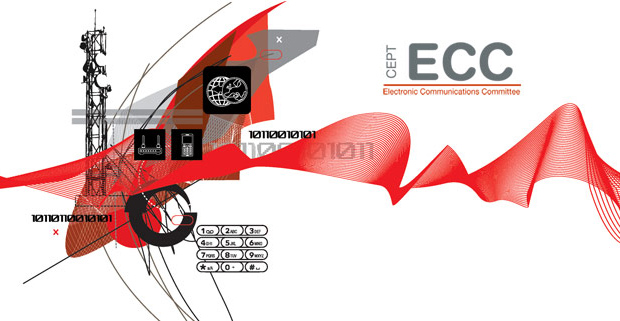European harmonisation of L-band spectrum for mobile
CEPT has been working to provide additional spectrum for mobile in the L-band (1427-1518 GHz). Steve Green, Chairman of ECC PT1, summarises the activities undertaken to develop the new harmonisation measures.
Introduction
Since WRC-15, CEPT has developed a number of harmonisation measures for the L-band mobile spectrum identified for International Mobile Telecommunications. This built on the work done before WRC-15 on harmonisation of 1452-1492 MHz for mobile supplemental downlink.
WRC-15 and initial technical studies
In late 2015 the World Radiocommunication Conference (WRC-15) identified 1427-1452 MHz and 1492-1518 MHz for IMT. These bands are extensions to the core 1452-1492 MHz supplemental downlink band that was originally harmonised in ECC Decision (13)03.
After WRC-15, ECC PT1 was given the task of producing harmonised technical conditions including band plans for these extension bands. There were a number of strands to this work.
At the lower end, the technical conditions for protection of the adjacent passive band (1400-1427 MHz) needed to be built in to the overall harmonisation measures. These had been agreed during WRC-15 in a revision of Resolution 750, which is included in Volume 3 of the Radio Regulations. At the upper end, technical conditions for compatibility with adjacent band use of the mobile satellite service needed to be studied.
Technical studies on adjacent band compatibility at 1518 MHz had started in CEPT in September 2014, in the framework of CPG preparations for WRC-15. Following the Conference, the work moved into ECC PT1. The studies looked at a number of different scenarios, including use of land mobile satellite, maritime mobile satellite and aeronautical mobile satellite terminals in the adjacent band. They included minimum coupling loss and statistical analysis. These studies culminated in the publication of ECC Report 263 in March 2017, which concludes on the base station unwanted emission limits and MSS receiver blocking characteristics needed for compatibility in all scenarios.
The studies in ECC Report 263 were subsequently introduced into ITU-R to assist in the adjacent band compatibility studies being carried out in Working Party 4C and Working Party 5D.
Harmonisation work
In November 2016, when ECC Report 263 had been agreed for public consultation, ECC asked ECC PT1 to embark on work to develop an ECC Decision for harmonised technical conditions in 1427-1452 MHz and 1492-1518 MHz. The conditions at the 1427 MHz and 1518 MHz boundaries would be based on results of existing technical studies in ECC Report 263; in the rest of the band, ECC asked ECC PT1 to make the most benefit of the existing harmonisation in 1452-1492 MHz. The studies would be documented in an ECC Report, which would sit alongside the ECC Decision and explain how the technical conditions were derived.
Shortly after the initial task from ECC, the European Commission issued a mandate to CEPT on technical studies in the same frequency bands, with the aim of revising Commission Implementing Decision (EU) 2015/750.
ECC Report 269 was published in November 2017 alongside CEPT Report 65 and ECC Decision (17)06. This applied the existing block edge masks from 1452-1492 MHz across the entire range. The key features are:
- Blocks in multiples of 5 MHz, running from 1427-1518 MHz
- Unwanted emission limits below 1427 MHz in line with WRC Resolution 750
- Maximum power
Since the band plan was based on multiples of 5 MHz extending out from the 1452-1492 MHz core band, the lower boundary was set at 1427 MHz and the upper boundary was set at 1517 MHz. There was some extra work to be done with the existing technical conditions below 1452 MHz and above 1492 MHz. In countries that do not use the expansion bands, the existing out-of-band limit to protect adjacent services would still be required but countries that make the band immediately below 1452 MHz available for MFCN would not need to apply the existing out-of-band limits at that frequency. Similarly, countries that make the band immediately above 1492 MHz available for MFCN would not need the existing out-of-band limits at that frequency. A revision was therefore made to ECC Decision (13)03 to clarify this point.
Additional studies on adjacent band blocking
During the preparation of ECC Report 269 and ECC Decision (17)06 the satellite industry informed CEPT that some L-band mobile satellite receivers did not meet the blocking performance requirements that were included in ECC Report 263 and that the requirements in the ETSI harmonised standards were not aligned with the values in that Report. Since this was a receiver blocking issue it would not affect the conclusion of unwanted emission limits for base station equipment in the harmonised technical conditions, but it meant that some further analysis would be needed on solutions that could be implemented according to national requirements for protection of particular locations where it is necessary to use L-band MSS terminals. This analysis is currently taking place in ECC PT1 with participation from a wide range of satellite, maritime and aeronautical stakeholders and has involved CEPT in communication with ICAO, IMO and Eurocontrol. It is expected that the draft report will be ready for ECC public consultation later this year.
Final reflections
The participants in ECC PT1 managed to complete the harmonisation work very rapidly and to a high quality. They made use of existing analysis, drawing on ECC Decision (13)03 and lessons learned in the development of ECC Report 263, even creating a draft CEPT Report for the Commission from scratch and readying it for ECC to approve for public consultation in a single meeting.
The technical framework for use of the 1.4 GHz band is now available in the updated ECC Decision (13)03 and new ECC Decision (17)06. This puts CEPT countries in a very good position to be leading on roll-out of mobile broadband services in this global band, while affording flexibility to adapt to their national needs.
Steve Green, ECC PT1 Chairman



